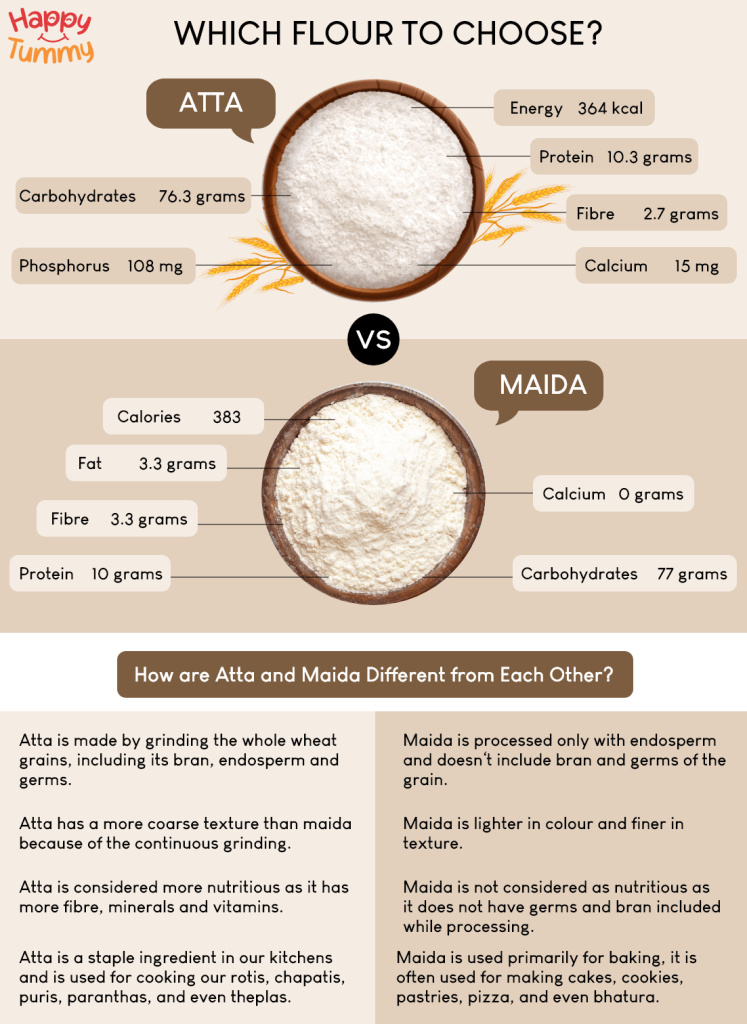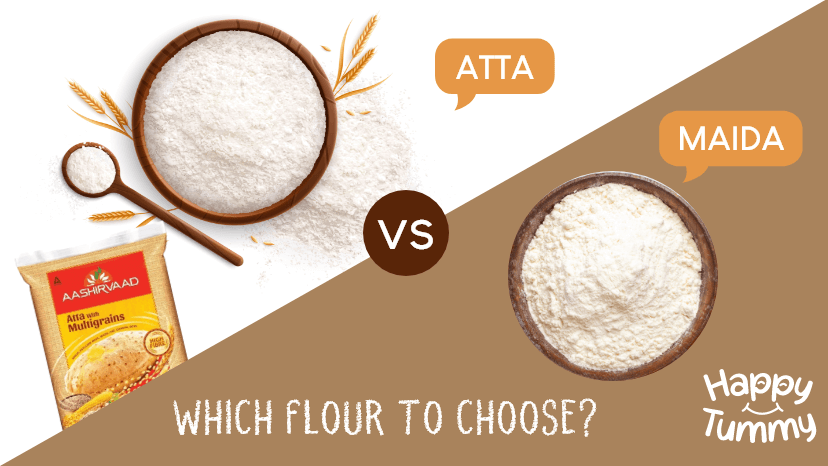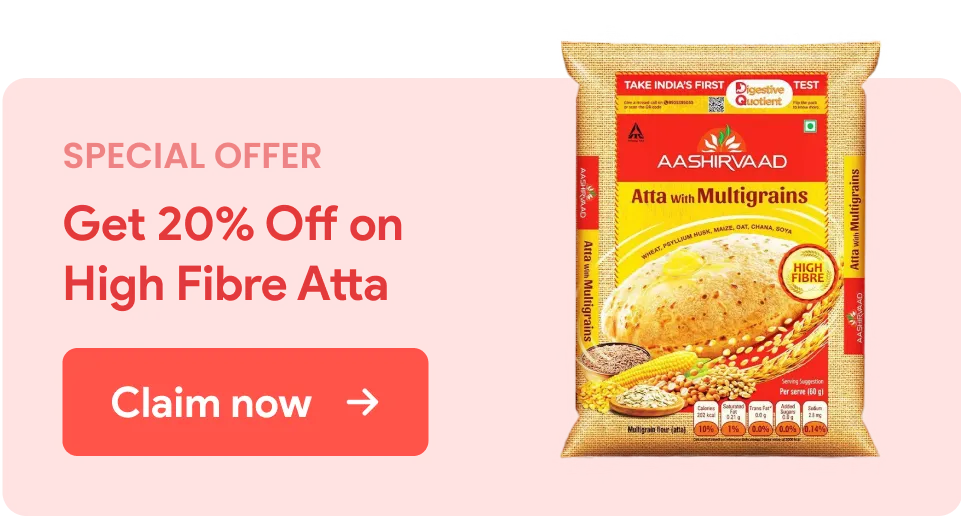Table of Contents
Nobody likes eating the same thing over and over again, and Indians adore variety in their cuisine. And with the abundance of possibilities available, why not?
We have choices for sabzis and curries in addition to the type of bread we wish to consume with it. From paranthas and chapatis to puris, theplas and naan, the list is endless.
And to make all these wonderful and delicious recipes, we need our hero ingredient – flour. No dish will be complete without this super ingredient. But how do you decide which flour to go with – atta or maida?
These are common ingredients that are mostly found in Indian kitchens. You may feel to interchange if one is unavailable, but both have different characteristics and how they impact the recipe.
So, to choose wisely and healthily, it is a good idea to be aware of the differences between these two excellent components. So why are we still waiting? Let’s begin our exploration now.
How are Atta and Maida Different from Each Other?

How is atta made, and how is it different from maida? It is a common question.
Atta is made by grinding the whole wheat grains, including its bran, endosperm and germs. On the other hand, maida is processed only with endosperm and doesn’t include bran and germs of the grain.
If you compare the textures, you will realize that atta has a more coarse texture than maida. Atta’s texture is because of the continuous grinding, whereas maida is lighter in colour and finer in texture.
Moreover, atta is considered more nutritious compared to maida. Atta has more fibre, minerals and vitamins, often missing in maida as it does not have germs and bran included while processing.
Do you know you can get more fibre if you use multigrain atta? Try Aashirvaad Atta with Multigrain, which has the goodness of six grains and is more fibrous.
In addition, you can also check the fibre content in the dishes made of atta by checking their fibre ratio on My Meal Plan.
Where to Use Atta and Maida?
The next big question that is commonly asked is where to use atta and where to use maida.
These two flours have different uses in our Indian kitchens because of their texture and properties. Atta is a staple ingredient in our kitchens and is used for cooking our rotis, chapatis, puris, paranthas, and even theplas.
While maida is used primarily for baking, it is often used for making cakes, cookies, pastries, pizza, and even bhatura (for chole bhature). It is because all these dishes require the flour to rise and have a fluffier and lighter texture.
Nutritional Value of Atta
Here is the nutritional value of eating rotis made of atta. The table below will show you the different nutrients you can get in 100 grams of atta [1]:
| Elements | Amount |
| Energy | 364 kcal |
| Protein | 10.3 grams |
| Carbohydrates | 76.3 grams |
| Fibre | 2.7 grams |
| Calcium | 15 mg |
| Phosphorus | 108 mg |
Nutritional Value of Maida
Now, let’s look at the nutritional value of maida. The table below lists the many nutrients that can be obtained from 100 grams of maida. [2]:
| Elements | Amount |
| Calories | 383 |
| Fat | 3.3 grams |
| Carbohydrates | 77 grams |
| Fibre | 3.3 grams |
| Protein | 10 grams |
| Calcium | 0 grams |
Conclusion
The distinction between atta and maida flour can be crucial in culinary arts, where accuracy and subtlety frequently distinguish the ordinary from the spectacular.
While maida delivers a fine, smooth texture suitable for some delicate recipes, atta offers your dishes a hearty, nutty flavour and extra nourishment.
You may create recipes that taste excellent and have the ideal consistency if you know when and how to utilize these flour.
The atta vs. maida argument finally highlights the culinary expertise that allows you the creative freedom to modify recipes to your preferences.
To achieve culinary perfection, remember this floury battle the next time you’re in the kitchen.
FAQs
Atta is made of the whole grain that includes every part of it. In contrast, maida is not made of whole grain and is processed and often bleached. Hence, the nutrients available in atta are more than maida, making it a healthier option for daily consumption.
No, atta and maida are two different ingredients that are made in different ways. The main distinction between the two is that while atta is created from the wheat grain’s germ, endosperm, and bran, maida is made from the endosperm.
Yes, you can use maida to prepare chapatti, parantha, puris and other dishes.















